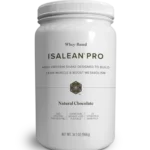
- 0 Comments
- admin
The Truth About Protein Shakes

Proteins are not typically rated in a standardized manner. However, they can be evaluated based on several factors that contribute to their quality, nutritional value, and functional properties. Here are some key considerations when assessing proteins:
Amino acid composition: Proteins are composed of different combinations of amino acids. Essential amino acids are those that the body cannot produce and must be obtained from the diet. High-quality proteins contain all essential amino acids in adequate amounts, making them “complete proteins.” Animal-based proteins, such as meat, poultry, fish, eggs, and dairy products, are generally considered complete proteins. Plant-based proteins, with a few exceptions like soy and quinoa, may be incomplete but can be combined to achieve a complete amino acid profile.
Protein digestibility: The digestibility of a protein refers to how effectively it can be broken down and absorbed by the body. Proteins with high digestibility are more readily utilized by the body for tissue repair, growth, and other essential functions. Animal-based proteins usually have higher digestibility than plant-based proteins, although individual plant-based protein sources can vary in their digestibility.
Biological value: The biological value (BV) of a protein is a measure of its ability to contribute to the body’s protein needs. It is calculated by comparing the nitrogen retained in the body from a specific protein source to the nitrogen absorbed from that source. Proteins with a high BV are more efficient in supporting growth and repair. Animal-based proteins generally have higher BV compared to most plant-based proteins.
Protein efficiency ratio (PER): The PER measures the weight gain of a test subject (typically a laboratory animal) fed a specific protein source relative to its protein intake. It is less commonly used nowadays as it has limitations, particularly in assessing protein quality for humans.
Protein content: The protein content of a food or product is measured as the percentage of protein by weight. Higher protein content indicates a more concentrated protein source.
Functional properties: Proteins can have various functional properties, such as gelling, emulsifying, or foaming capabilities, which can impact their suitability for specific culinary or industrial applications. These properties can vary depending on the protein source and processing methods.
It’s worth noting that assessing protein quality is just one aspect of evaluating a food’s nutritional value. Other factors like overall nutrient composition, presence of vitamins and minerals, and
What is the Best Protein?
Isalean Pro
Protein Packed
IsaLean PRO Shake has 36 grams of undenatured whey protein per serving from grass-fed New Zealand cows. This helps stimulate muscle protein synthesis and build lean muscle.
Maintain Muscle
We naturally lose muscle as we age. This specialized formula with a complete branched-chain amino acid profile is designed to help you gain and maintain muscle as you age.
Complete Meal
A nutrient-dense meal with plenty of protein and 23 essential vitamins and minerals so you can maintain healthy habits with ease.
Low Glycemic, High Satiety
This low-glycemic superfood shake won’t spike your blood sugar and has added protein to help you feel fuller, longer.


